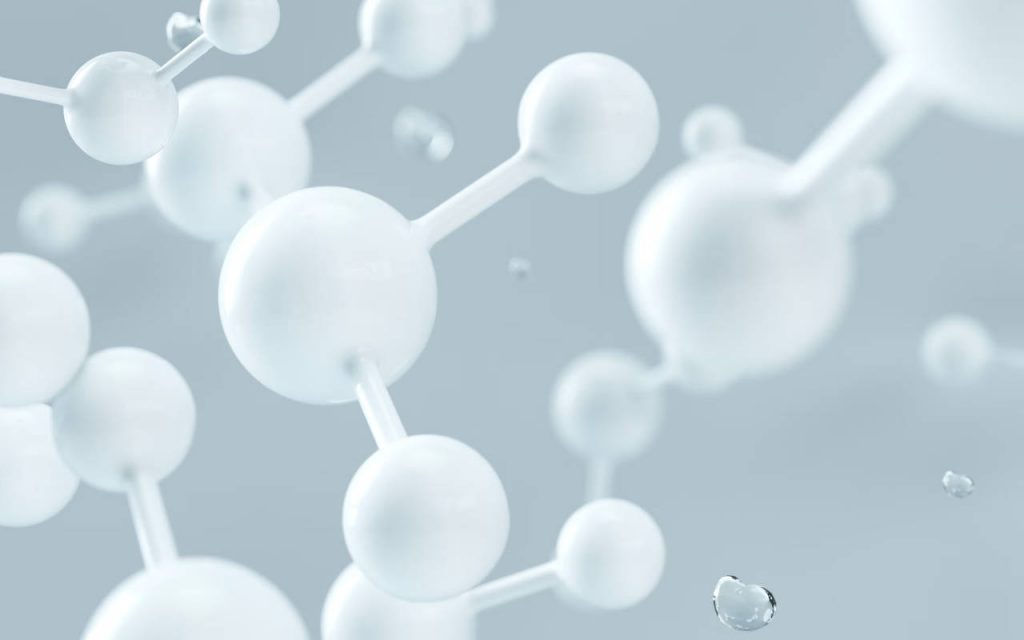Polythene is a type of plastic. It is made from a gas called ethylene, by putting it under intense heat and pressure.
To turn the gas into plastic, another chemical (called a catalyst) is added to the hot, high pressure ethylene. Now, a chemical reaction happens – and the ethylene stops being a gas. The molecules bunch together into long strings, which stay solid at normal temperature and pressure.
These long strings can now be formed into plastic pellets. These pellets will melt when heated and can be moulded into different shapes, or blown into thin sheets and bags.
Polythene has unique properties which set it apart from the plastic used to make consumer goods. It is highly flexible, but super strong – meaning it can be made into thin sheets or bags that are super lightweight, but can hold countless times their own weight.
Polythene is commonly used to keep food fresh or to keep things dry, and this is where most people encounter polythene day-to-day. Shopping bags, food packaging, and the inner packaging of boxed items are all easy places to find it.

Going deeper… What’s the chemical makeup of polythene?
Polythene is primarily made of ethylene. Ethylene is a molecule made from two carbon atoms and four hydrogen atoms, with the formula C2H4.
Ethylene is a flammable gas, with a strong double bond – but this bond can be broken with heat, pressure and catalysts, into a single bond. This leaves an extra bond available on the molecule, which can link to another carbon atom to the ethylene molecule. And this has a snowballing effect, making longer and longer chains of ethylene. The result is a polymer, and how the plastic came to be called polythene (polyethylene).
Learn more about the physical properties of polythene.
Who invented polythene?
Like so many things in the world, polythene was a happy accident. A few people discovered it independently, but only one or two kept trying to perfect it.
The first recorded person to stumble upon polythene was Hans von Pechmann – who also discovered diazomethane, and has several chemical processes named after him. In 1898, he accidentally created a mysterious, waxy substance in his lab while he was investigating diazomethane. It was noted down, given a name – and left at that.
It was accidentally discovered again in 1933, by two industrial chemists called Eric Fawcett and Reginald Gibson. But this time, they didn’t stop at noting it down, and so are credited with the invention of the material in its modern form. With the help of a colleague, they perfected the polythene-making process over years.
But it became a top secret material as WWII broke out. British forces discovered that polythene had very low-loss properties at very high frequency radio waves, making it the perfect insulator for radar equipment.
Read more about how polythene is made.
Further development began once again post-war, through the 1950s – when landmark breakthroughs in the commercial production of polythene were invented by American chemists Robert Banks and J. Paul Hogan, as well as German chemist Karl Ziegler. Innovation continued into the 1970s, by which time polythene had become a reliable, cheap wonder material, replacing paper, glass, and other much heavier and more expensive packaging systems.
What is polythene used for?
Polythene has countless uses – from automotive applications and civil engineering, to medical devices and farming.
Find out more – What is Polythene Used For?
New uses for polythene are still being discovered. One day, it could be synthesised by space travellers settled on Mars, and used as an abundant 3D printing material. Polythene is also used to grow and distribute food, as well as in conservation efforts (like the salmon cannon) – which seems completely wild given its environmental reputation.
But the most common use for this incredible material is packaging. And when it comes to polythene packaging, nobody does it better than our team at NPF!
Custom polythene, made to perform
NPF Packaging creates high-performance, bespoke polythene products. Get custom blends, colours and prints – for your perfect polythene.
Get a quote now, or call us on 01773 820415 to start designing your polythene packaging.


